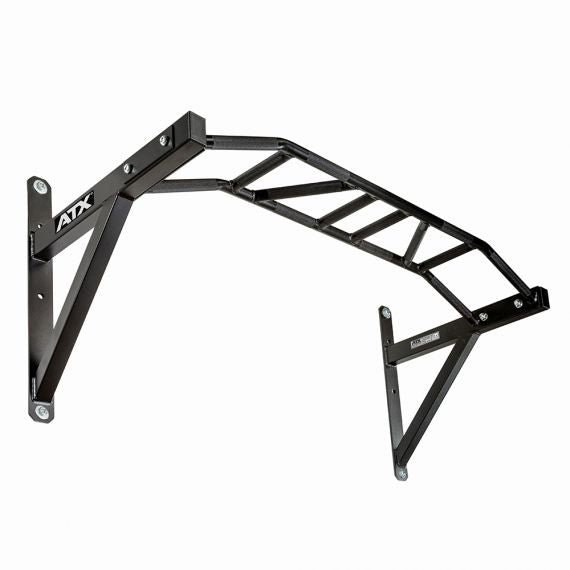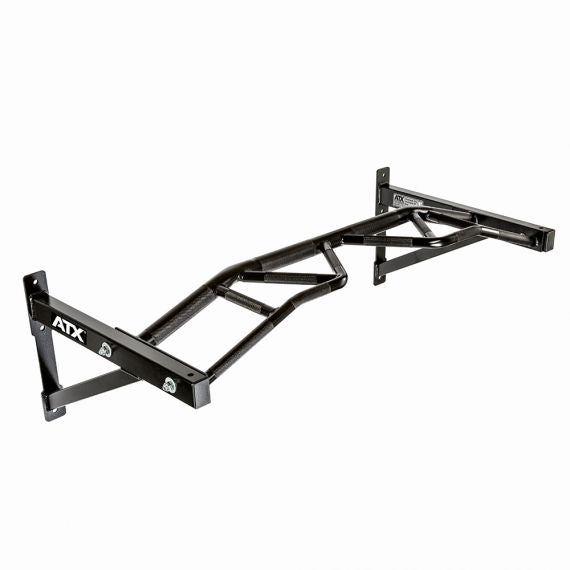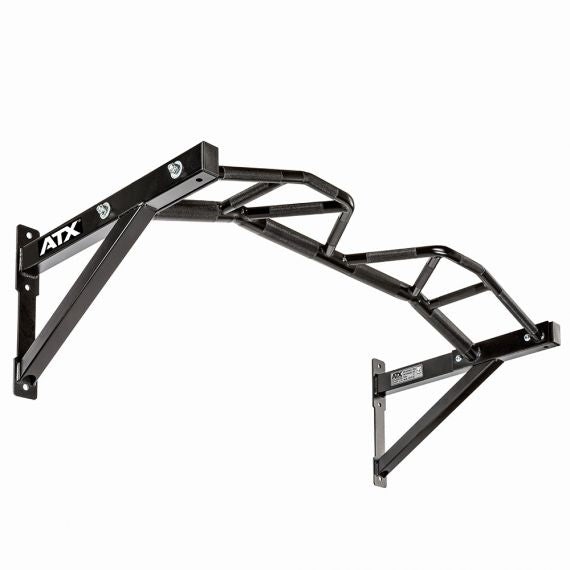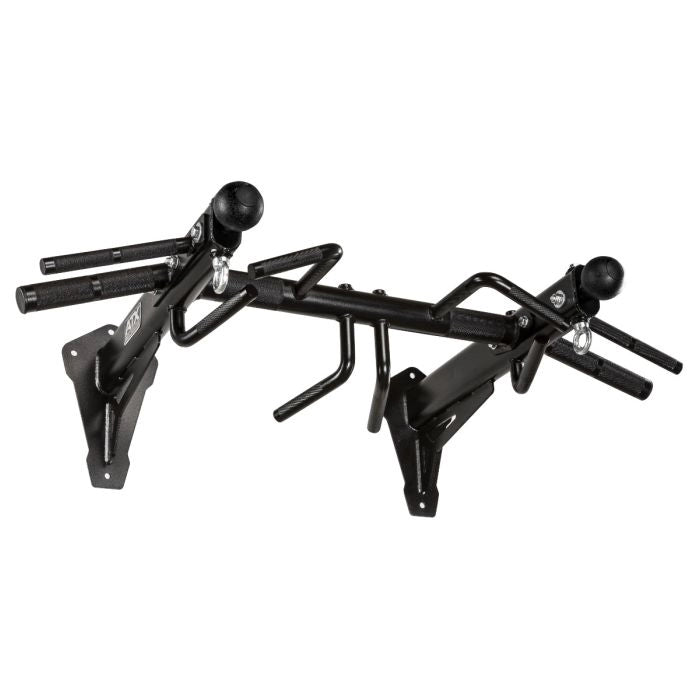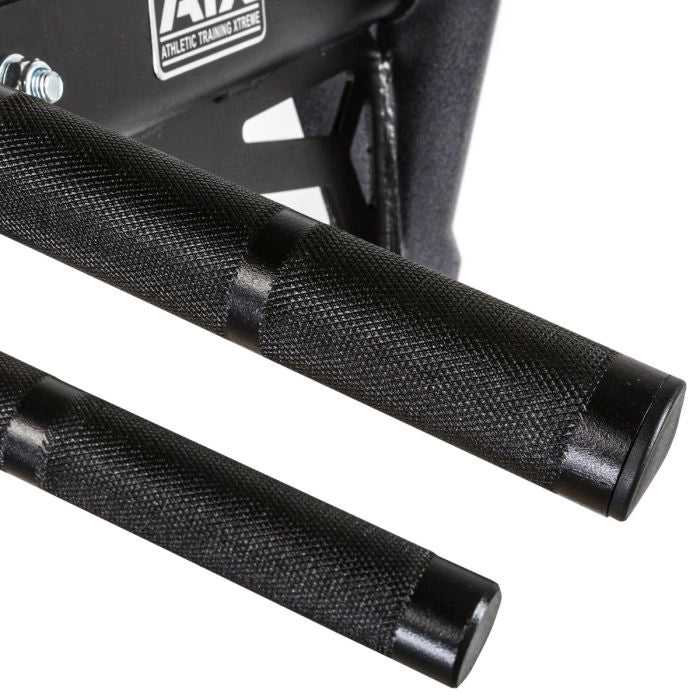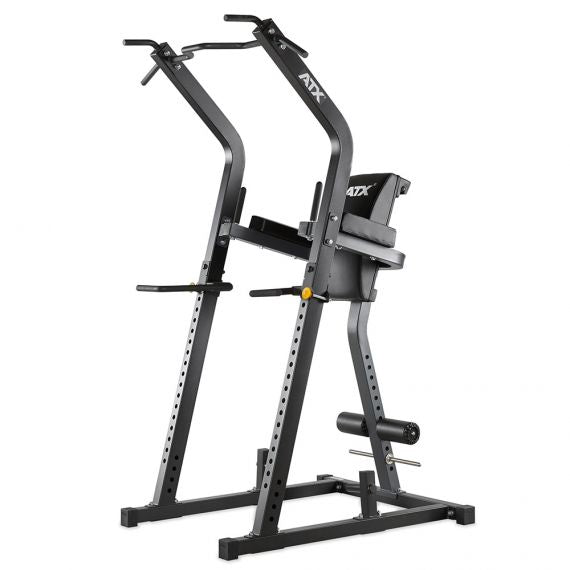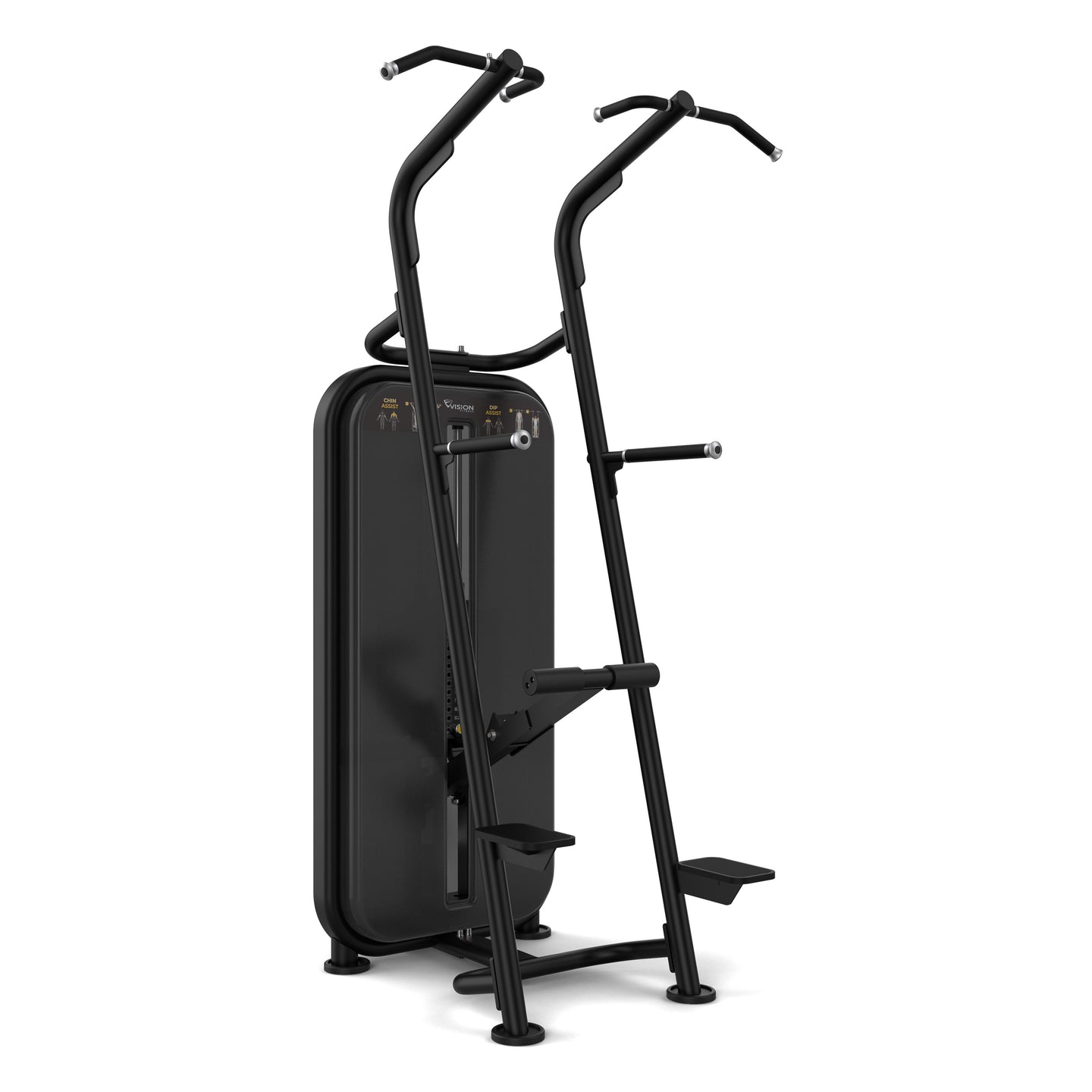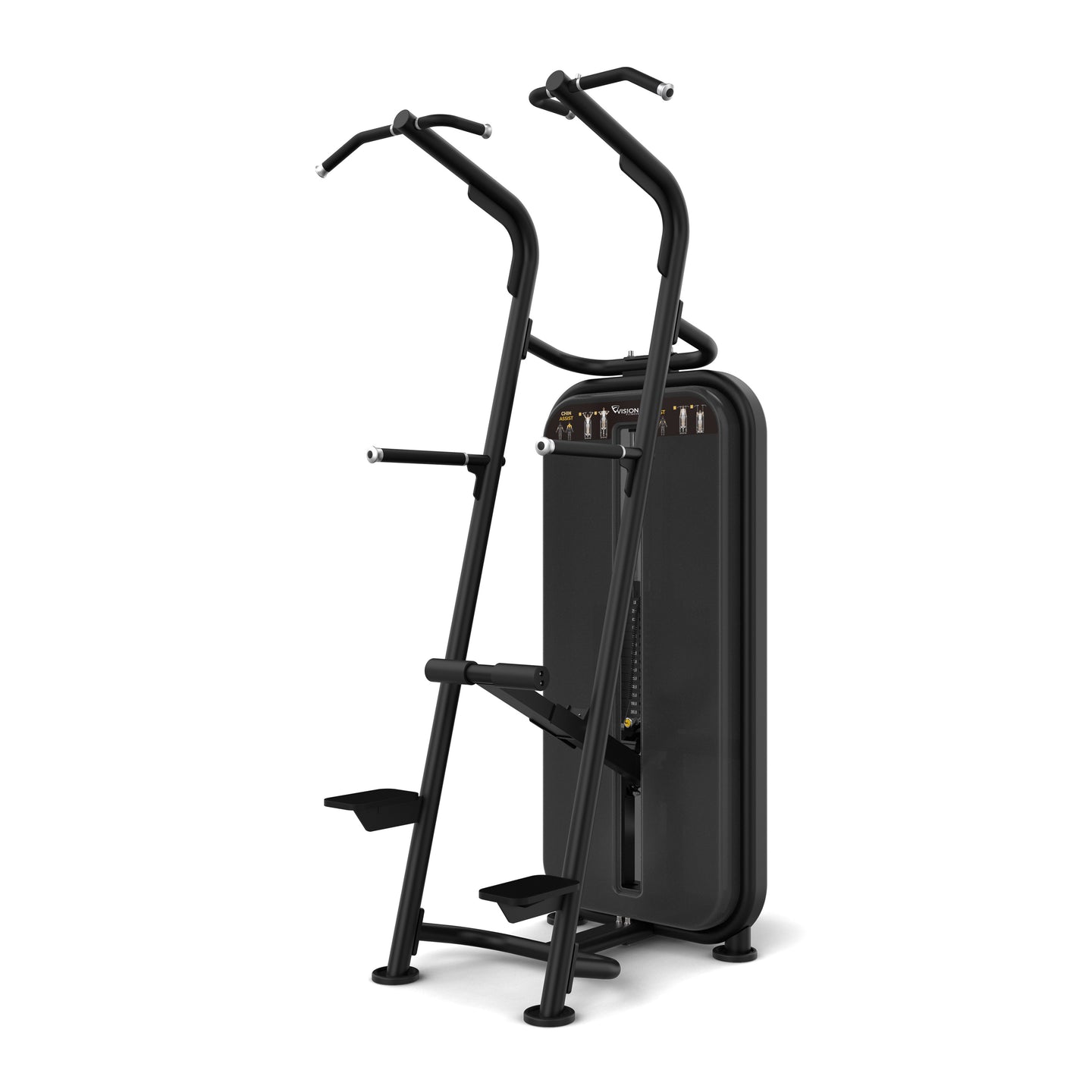Filters
-
ATX® pull-up bar Gladiator
Regular price €136,67 -
ATX® Multi Grip pull-up bar
Regular price €175,99 -
ATX® Functional Pull-Up Station - pull-up station
Regular price €284,15 -
ATX® Multi Tower Fitness Tree
Regular price €647,92 -
Dip / Pull-up Machine Stack Weight - Vision Fitness
Regular price €4.718,34
Ordering, delivery & care.
Can I get advice before purchasing?
Yes! Our team will be happy to assist you with your product selection – by phone, email, or in person at our showroom. Together, we'll find the right equipment for your training.
How quickly will the delivery take place?
We deliver quickly and reliably. You can find the exact delivery times directly on the respective product page or during checkout. We're happy to help with any questions about availability.
Will my device be delivered pre-assembled?
Many fitness equipment items are delivered partially assembled. Easy-to-follow assembly instructions are included. Many pieces of equipment can be assembled independently; for more complex items, we recommend a second person. If you require assembly service, please contact us.
How do I properly care for my fitness equipment?
Wipe down moving parts regularly, check screw connections for tightness, and ensure storage in a dry environment. For some devices, occasional lubrication is recommended—you can find information on this in the respective manual.
Not sure which product is right for your training goals? No problem! Our experienced team will take the time to talk to you – by phone (08142/448666), email, or visit our showroom. Together, we'll find the optimal solution for your needs.

The pull-up bar - perfect for back training
Training with a pull-up bar is one of the most effective methods for strengthening the entire body and specifically developing muscle groups in the upper body. As an indispensable piece of fitness equipment, it is ideal for anyone who wants to build up their back, shoulder and arm muscles, increase their performance and sustainably improve their posture. Thanks to its easy installation, a pull-up bar fits easily into any home gym and opens up versatile training options for different performance levels - from beginners to advanced athletes. Pull-ups are one of the most important basic exercises in functional training. They primarily work the large back muscle ( latissimus dorsi ), contribute to the stabilization of the entire upper body and have a positive effect on posture. By comprehensively engaging several muscle groups simultaneously, not only strength but also coordination and body control are improved. Regular training on a pull-up bar also strengthens grip strength , increases strength endurance and supports targeted muscle definition. This reduces the risk of injury during sporting activities and everyday movements, as the core and upper body muscles contribute significantly to stability. Whether as an introduction to strength training, to improve performance, or as a supplement to other training methods – the pull-up bar is an essential training tool for a holistic, functional, and effective workout.
What types of pull-up bars are there
Pull-up bars are available in a variety of designs, offering the perfect solution for every training environment. While some models are specifically designed for home gym use and feature particularly easy assembly and a space-saving design , others are ideal for professional use in gyms thanks to their robust construction and higher load-bearing capacity.
Freestanding pull-up bar
Freestanding pull-up stations are among the most versatile pieces of training equipment in the field of bodyweight training . Compared to traditional pull-up bars, they not only offer the option of pull-ups, but also open up a wide range of additional exercises such as dips, leg raises, push-ups, and isometric holds. This makes them an excellent choice for anyone looking for a comprehensive, full-body workout. A key advantage of these stations is their independent construction. Since they don't have to be mounted on walls or ceilings, they are particularly flexible in terms of placement. Whether in the home gym, garage, or gym – a freestanding pull-up station can be positioned exactly where it is needed and can also be moved if necessary. In addition, freestanding pull-up stations are characterized by their robust construction and high load-bearing capacity , making them ideal even for intensive training and ambitious athletes. By combining various training options, they enable targeted strengthening of the back, arms, shoulders, torso, and abdominal muscles, ensuring a balanced and functional workout. Anyone looking for a compact yet comprehensive training device will find a freestanding pull-up station a true all-rounder that meets virtually all the demands of modern strength and fitness training. We recommend the ATX® Multi Tower - Fitness Tree .
Wall pull-up bar
A wall-mounted pull-up bar is the perfect choice for anyone who values stability, safety, and durability in their training. Thanks to its secure wall mounting, it boasts a particularly high load-bearing capacity and is also suitable for demanding exercises and training with additional weights. Anyone who wants to buy a wall-mounted pull-up bar will receive a reliable fitness tool that creates optimal conditions for intensive strength training in both a home gym and a professional studio. Its space-saving design is particularly advantageous. Since the bar is attached directly to the wall, it requires very little space and can even be used in smaller training areas such as an apartment, basement, or garage. Despite its compact design, its functionality remains unlimited – different grip options allow for versatile training for the back, arms, shoulders, and torso. With a wall-mounted pull-up bar, you bring home a robust, minimalist, and functional training tool. It offers ideal conditions for effective pull-ups, chin-ups, and holding exercises and supports you in targeted muscle building and improving your posture. Whether for beginners or advanced athletes, a wall-mounted pull-up bar is a space-saving and powerful solution for intensive upper-body training at home. Discover the ATX® Gladiator pull-up bar .
Pull-up bar ceiling
Ceiling-mounted pull-up bars are an excellent solution for anyone who has limited wall space but still wants to enjoy an effective upper-body workout. Because they are permanently mounted to the ceiling, they offer an extremely stable and durable construction that can easily withstand even intensive training sessions. A key advantage of this option is maximum freedom of movement. Mounting them to the ceiling eliminates the constraints of walls or furniture, allowing pull-ups and other exercises to be performed with a full range of motion . This makes ceiling-mounted pull-up bars particularly attractive for athletes who value free, unrestricted training. Furthermore, different grip positions allow for targeted training of different muscle groups—from the back and shoulders to the arms and core muscles. This makes them ideal not only for traditional strength training but also for functional workouts. Whether in a home gym, basement, or fitness studio—a ceiling-mounted pull-up bar impresses with its space-saving design , high stability, and optimal freedom of movement for every exercise. This makes it the ideal choice for anyone looking for a compact and professional solution for their upper body training.
What are the advantages of a pull-up bar?
1. Full-body workout : Pull-ups are among the most effective bodyweight exercises. Although at first glance they're considered a classic upper-body exercise, they engage far more muscles than just the back and arms. In addition to the latissimus dorsi, shoulders, and biceps, the core muscles are also intensively activated, as they stabilize the body during the movement. This creates a comprehensive full-body workout that promotes strength, coordination, and core tone.
2. Muscle building : A pull-up bar is one of the best pieces of fitness equipment for targeted upper-body muscle building. Each pull-up engages large muscle groups like the latissimus dorsi, biceps, trapezius, and rear delts simultaneously. By intensively engaging these muscles, you can not only effectively build strength but also achieve clear muscle definition. Regular training with progressively increasing repetitions or adding weight ensures noticeable progress and visible results.
3. Increased grip strength : Another often underestimated benefit is improved grip strength. Since your entire body weight is held on the bar, each repetition trains not only the major muscle groups but also the forearms and hands. Strong grip strength is important not only for pull-ups themselves, but also for many other sports such as climbing, weightlifting, CrossFit, and gymnastics.
4. Diverse exercise options : A pull-up bar offers far more than just the classic pull-up variation. Different grips, such as overhand grip (pull-ups), underhand grip (chin-ups), or hammer grip , allow you to specifically train different muscle groups. While the overhand grip places more emphasis on the back, the underhand grip emphasizes the biceps, and the hammer grip particularly targets the forearms and shoulders. This variety allows for individualized and varied training – ideal for staying motivated in the long term and achieving progress without plateauing.
How useful is a pull-up bar?
Pull-ups are one of the most effective exercises in strength training and are a true supreme discipline in the field of bodyweight training . With a pull-up bar, the entire upper body muscles can be trained specifically and intensively. The back muscles, especially the latissimus dorsi, are heavily stressed with each pull-up. The biceps muscles, shoulders and numerous stabilizing muscle groups are also activated, which makes the training particularly effective. Another major advantage of training on a pull-up bar is the improvement in grip strength. Since the entire body weight has to be held, the forearms and hands are continuously trained. Strong grip strength is not only advantageous in strength training itself, but also indispensable in many sports such as climbing, gymnastics or weightlifting. In addition, regular pull-up training promotes intermuscular coordination , i.e. the optimal interaction of several muscle groups during a movement. This leads to improved movement economy and makes the body more efficient overall. At the same time, activating the core muscles contributes significantly to increasing overall body stability, which in turn can prevent injuries and increase performance in other exercises.
Which pull-up bar is right for me?
Choosing the right pull-up bar depends largely on your personal training goals and the available space . Different models offer different advantages that are important depending on the area of use and the intensity of your training. Anyone considering purchasing a pull-up bar should therefore carefully consider the characteristics of the individual models. Wall- and ceiling-mounted pull-up bars impress with their maximum stability and load-bearing capacity. They are ideal for athletes who want to perform intensive upper-body training using their own body weight or additional weights. Thanks to their permanent installation, these bars offer a safe training environment for pull-ups, chin-ups, or holds, and enable effective strengthening of the back, shoulders, arms, and torso. Freestanding pull-up stations are the perfect solution for comprehensive pull-up training. In addition to classic pull-ups, they also allow exercises such as dips, leg raises, and isometric holds. The freestanding design allows maximum flexibility in placement and is ideal for athletes who want to perform holistic upper-body and torso training. If you choose carefully and consider your own training goals, you will find the right pull-up bar to be the ideal device for effective and varied training, whether in a home gym or a professional studio.
How often should you do pull-ups?
For beginners, it is recommended that you include pull-ups in your training plan two to three times a week. This allows you to build up a solid base of strength and learn the technique of the exercises step by step. Resistance bands can be used to support this. They make it easier to lift your own body weight, enable controlled movements, and help you perform the exercises correctly. Advanced athletes can tailor their training with the pull-up bar to specifically build muscle mass, increase grip strength, or improve strength endurance. By varying the grip types, using additional weight , or adjusting the repetitions and sets, you can optimally adapt your pull-up training plan to your individual goals. Regeneration is a key factor for long-term training success. Adequate breaks between units prevent overload, injury, and muscular fatigue. Only through targeted recovery can the muscles adapt optimally to the load and achieve long-term progress. With a well-thought-out pull-up training plan, supporting equipment, and sufficient regeneration, both beginners and advanced users can complete effective, safe, and sustainable pull-up training.
Which muscles are trained with a pull-up bar?
Training on a pull-up bar is one of the most effective methods for specifically strengthening the upper body and core muscles. Pull-ups activate numerous muscle groups simultaneously and contribute to strength, stability, and muscle definition. Specifically, the following muscles are particularly targeted:
✦ Latissimus dorsi (latissimus dorsi): The latissimus dorsi is the most important back muscle used in pull-ups. Through repetitive movement, it pulls the arms down and back, resulting in strong, broad, and defined back muscles. A well-trained latissimus also supports shoulder blade stability and contributes to improved posture.
✦ Biceps and forearms : The arms are particularly challenged when doing pull-ups: biceps and forearms are intensively stressed when pulling up your own body weight, which not only significantly improves grip strength but also sustainably increases arm strength.
✦ Shoulder and neck muscles : The shoulders and trapezius muscles stabilize the upper body throughout the entire movement. Strong shoulder and neck muscles ensure greater stability, safety, and an upright posture.
✦ Core muscles : The core muscles, consisting of the abdominal muscles, lower back muscles, and lateral core muscles, are actively engaged when training on the pull-up bar to stabilize the body during the exercises. A strong core improves body control, balance, and functional stability.
Three good reasons to buy a pull-up bar
I. Maximum efficiency for muscle building: Pull-ups are among the most effective exercises for building upper body muscle. They simultaneously engage multiple muscle groups —including the back, shoulders, biceps, and core—and thus enable rapid progress in strength and muscle training. Those who want to build muscle in a targeted manner will benefit from the high effectiveness of training on a pull-up bar.
II. Ideal for every fitness level: Whether you're a beginner or advanced, a pull-up bar is suitable for all training levels . By varying the grip types, repetitions, and additional weights, training can be customized and progressive. This allows every athlete to continuously improve their strength, endurance, and grip strength, and optimally adjust the training intensity to their own goals.
III. Space-saving and versatile: Pull-up bars require little space , are quick and easy to assemble, and still offer a comprehensive upper-body workout. Whether in the home gym, garage, or gym – the versatile exercises with the pull-up bar allow for effective training with minimal equipment. Different grip variations allow for targeted targeting of different muscle groups, keeping the workout varied and efficient.

